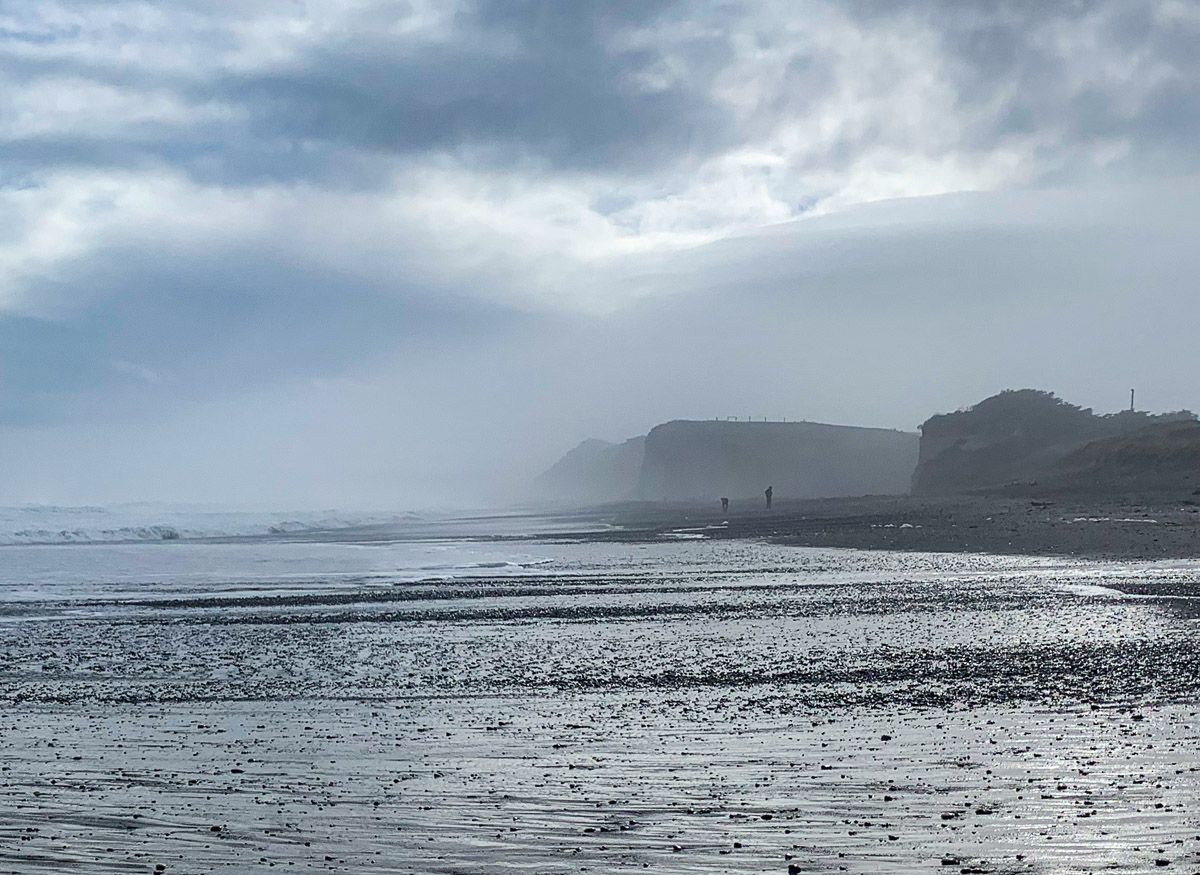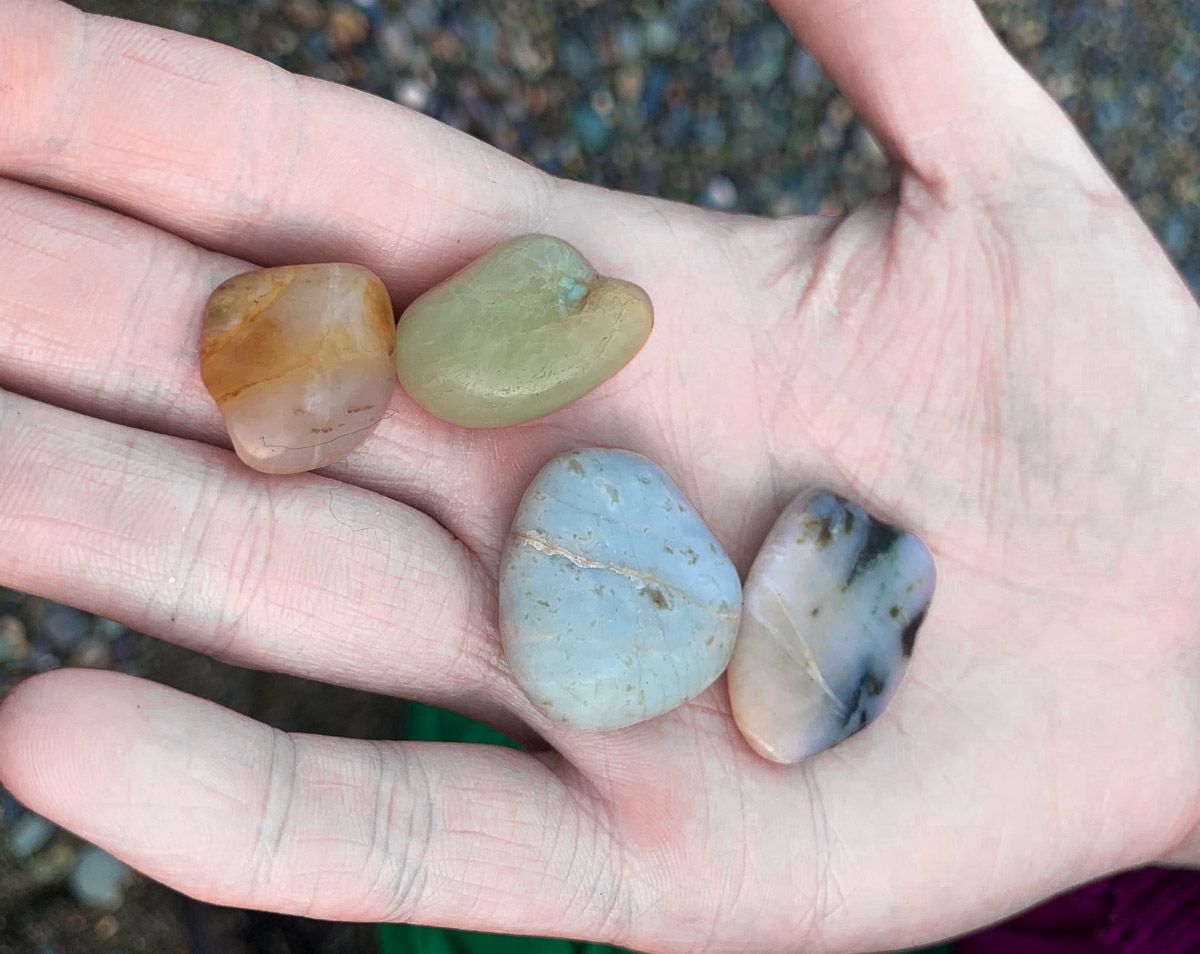Heading west along the Southern Scenic Route towards Tuātapere, a short drive from Orepuki, you will see a large sign promoting Gemstone Beach in Te Waewae Bay. Turn into the parking area, and walk to the beach between the dunes and cliffs.
This beach truly lives up to its name and is known for its unique, colourful collection of stones and rocks washed down from the Southern Alps. Even if you’re unsure what to look for, the variety of multi-coloured stones and pebbles on the beach is stunning. If you know what to search for, you might find semi-precious stones such as garnet, jasper, quartz, and nephrite. Pounamu and other more precious stones can also be occasionally seen. Flecks of gold are also possible, as you are not far from Orepuki and Monkey Island.
The gems found on Gemstone Beach began their long journey during the last ice age, around 16,000-18,000 years ago. As the glaciers of Fiordland retreated, the Southern Alps released rocks into the flow of the Waiau River. Eventually, the river carried the stones to the sea, and the prevailing currents caused them to be washed up around Gemstone Beach, southeast of the river's mouth in Te Waewae Bay. The stones are shaped and polished as they tumble through rivers and tides until the ocean currents push them back toward the shore, where they become embedded in the yellow-to-orange cliffs and blanket the beach.
While there, we met a collector who showed us a selection of garnets she had picked up. She said they are authentic gemstones if they retain their shine after drying. A small booklet by Jocelyn Thornton called Gemstones can be found here, which could help the more enthusiastic identify potential gemstones.
The Māori name for the beach is Aropaki, which means bight expanse. Orepuki is a variation of Aropaki and has the same meaning.











